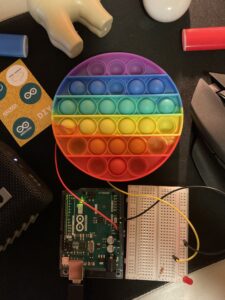Norman’s text:
In Norman’s text, “Emotion & Design: Attractive Things Work Better,” Norman describes how users’ overall experiences with a website are mainly derived from their first experience with the website- as in their first impression. The first impression comprises the website’s aesthetics, functionality, and simplicity. These factors ultimately influence our first impressions and determine whether we trust the website and what they’re selling or not. According to Norman’s explanation of the three cognitive stages—behavioral, reflective, and visceral—people often put more importance on a website’s overall aesthetic than its actual content. Reflective on how the website resembles similar-looking interfaces and our tendency to get accustomed to them and find comfort in them. Reflective and Visceral- aesthetics part- if not met, then our behavior, which is our response, would be more lenient on a lousy impression and our distrust in the website and its content. To gain users’ trust and respect, website creators should incorporate memories and experiences into the design, creating a nostalgic yet professional feel. Striking the right balance between functionality and aesthetics is crucial. I prefer websites with a simple yet profound interface over those crowded with information. For example, consider Google Chrome and Internet Explorer. Despite having similar functionality, most people choose Chrome. Why? Because Chrome offers an aesthetically pleasing and user-friendly interface, while Internet Explorer has an outdated look. While I mentioned the importance of nostalgia, in the case of Internet Explorer, it leans more towards appearing old rather than nostalgic.
Different cultures have unique preferences when it comes to aesthetics and first impressions. Take the Starbucks website, for instance. The American version has a clean, image-focused design with minimal text, presented in an easy-to-read format. It doesn’t overwhelm us with excessive information. In contrast, the Japanese Starbucks website features a dense arrangement of photos and text, which may need to be more aesthetically pleasing to most. This design is quite different from the standard Starbucks site. Japanese users may prefer these busier interfaces because they find it easier to absorb all the information without navigating to multiple pages. They see this as appealing and are more likely to stay on densely populated websites rather than simpler ones. Another reason for this preference could be, as Norman suggested, the influence of the reflective stage. Since Japanese individuals have grown accustomed to these dense websites from childhood, they now find comfort and beauty in them.
Hamilton’s text:
Margaret Hamilton, the mother of software engineering, has had quite a journey to get where she is now. Her contribution to the Apollo program and software engineering is quite impressive. During a period when traditional norms enforced specific stereotypical ideas on women, in addition to being a mother, Hamilton disproved preconceptions and showed a solid commitment to her career. Implementing the “do not touch P01” message within the astronauts’ tech is one of the great examples of how Hamilton’s attentiveness to detail contributed significantly to the astronauts’ successful trips. Even in the times of difficulties and challenges that astronauts go through, they can’t help but make small mistakes that can cost them considerably, which is why Hamilton’s contribution made a big difference to them.
Numerous astronauts’ lives were saved on multiple occasions due to Hamilton’s creative programming concepts and software contributions. Hamilton’s work created something so vast, even though it may have seemed simple and practical at first. Hamilton came up with the idea of relying on software, and billions of computers and other devices worldwide now use the concept of software in general. Her innovative strategy of giving consumers user-friendly interfaces was revolutionary and completely changed how we engage with technology.
Hamilton’s journey was not without its share of difficulties, filled with mistakes and challenging times. One thing to note is how those mistakes ultimately led Hamilton to success. By mistakingly clicking on the P01 button, for instance, she realized that there needed to be a mechanism in place to inform others about it. Therefore, mistakes are something natural, and the implementation of software into programs should also be a natural cure for some of the digital mistakes. Hamilton’s deep love for her job despite facing mistakes and society’s stereotypical ideas pushed her to success. This unwavering dedication and her outstanding accomplishments build a picture of a pioneer who made a lasting impression on the technological world. I have a deep appreciation of her work and the creation of the software engineering field. Her tale serves as an inspiration to everyone, demonstrating the seemingly endless opportunities that result from commitment, creativity, and a sincere love of one’s work.











